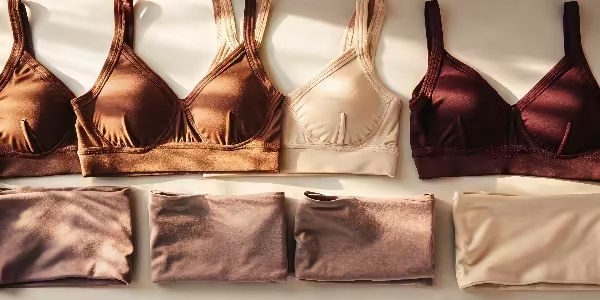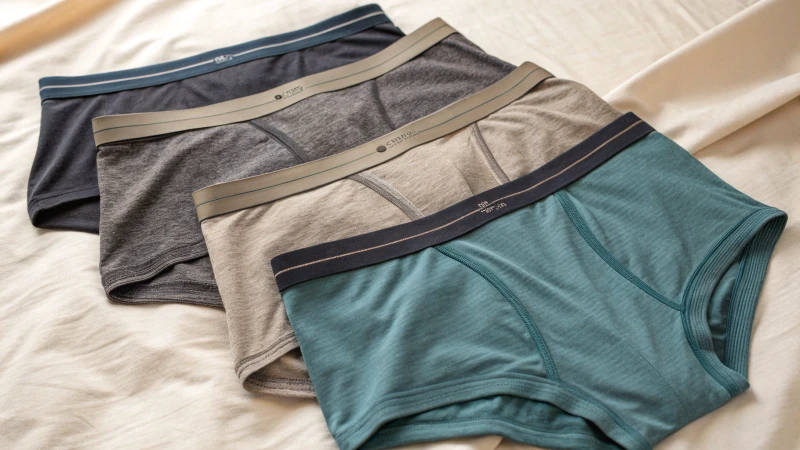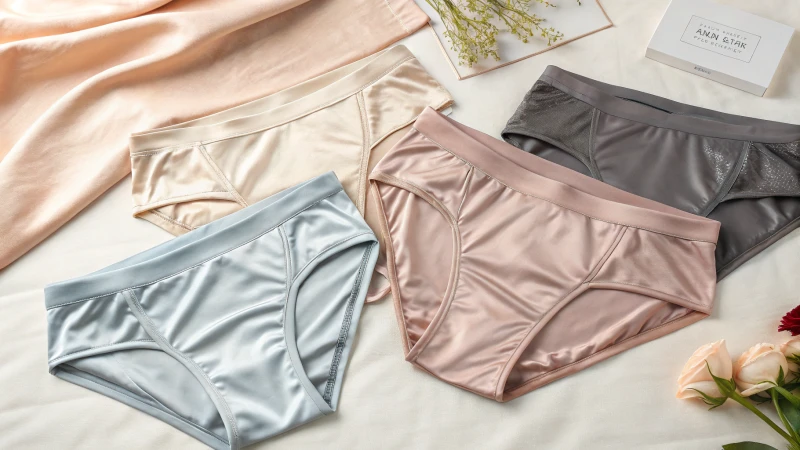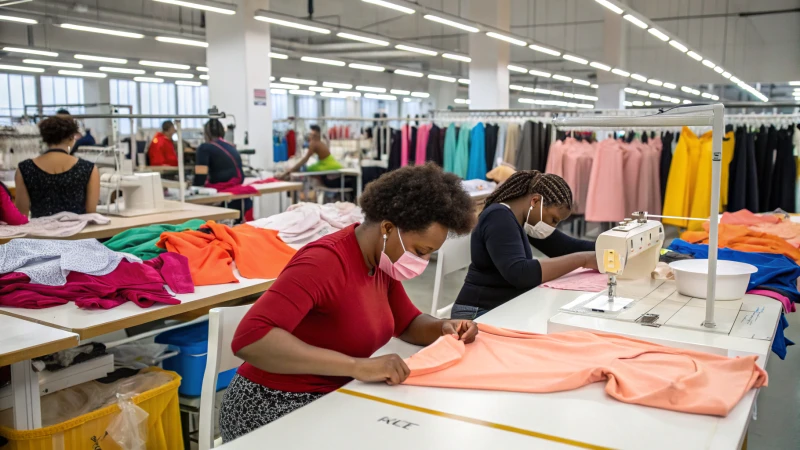
In the whirlwind of fashion, swiftly testing new designs can make all the difference.
Short-run production lines are my secret weapon for testing new underwear designs. By producing smaller batches, I can easily assess fit, comfort, and fabric performance while getting real-world feedback. This method reduces risk, ensuring only top-notch designs make it to full-scale production.
The magic of short-run production lines goes beyond just immediate feedback. It's like having a sneak peek into what customers really want and spotting any supply chain hiccups early on. This approach not only sharpens my design process but also gives my products a stronger foothold in the market.
Short-run lines reduce risk in new underwear design testing.True
Short-run production allows testing on a smaller scale, minimizing risks.
Short-run production lines are costlier than full-scale manufacturing.False
Producing smaller batches is typically less costly than full-scale runs.
What Are the Key Benefits of Short-Run Production for Underwear?
Have you ever wondered how some brands manage to stay so agile and responsive to the latest trends?
Short-run production lets underwear brands test designs with minimal risk, allowing for quick iterations, quality checks, and market feedback. This ensures only successful products move to full-scale production, making it a smart strategy for innovation and risk management.

Flexibility in Design Testing
I remember the first time I thought about launching my own line of underwear. It was exciting yet daunting, especially when it came to committing to large inventories without knowing how the designs would be received. That’s when I discovered the beauty of short-run production. It offers incredible flexibility1 in testing new designs. Brands like mine can experiment with different styles, fabrics, and features without the pressure of producing thousands of units upfront. It’s like having a dress rehearsal before the big show, allowing us to make tweaks and adjustments based on real-time feedback.
Risk Management
There’s always that nagging fear of a new product not resonating with customers. But with short-run production, the financial risk is significantly minimized. I’ve learned that if a particular style doesn’t hit the mark, I can pivot quickly without facing a huge financial loss. This method not only reduces waste but also lets me sleep better at night knowing my investment is protected from those dreaded unsuccessful launches.
| Benefit | Description |
|---|---|
| Design Flexibility | Allows for rapid design iterations based on customer feedback. |
| Risk Reduction | Limits financial exposure through smaller production quantities. |
| Quality Assurance | Enables detailed quality checks before mass production. |
Efficient Use of Resources
I can’t stress enough how valuable it is to spot supply chain or manufacturing issues early in the game. By producing in smaller batches, I’ve been able to streamline my processes and allocate resources more effectively. This efficiency is crucial when trying to maintain a competitive edge in the fast-paced fashion industry.
Enhanced Market Responsiveness
The ability to respond swiftly to emerging trends or consumer preferences is like having a superpower in the fashion world. With short-run production, I can capture market share quickly and stay ahead of competitors by offering products that align with current demands. It’s about being in the right place at the right time with the right product.
For anyone considering short-run production, weighing these benefits against traditional methods is essential for making informed strategic decisions. Trust me, it can be a game-changer.
Short-run production reduces financial risk for brands.True
Short-run production limits initial investment, minimizing financial losses.
Large inventories are required in short-run production.False
Short-run production avoids large inventories, allowing design flexibility.
How Does Real-World Feedback Influence Design Iterations?
Imagine transforming an idea into a product that truly resonates with users—it's all about harnessing real-world feedback!
Real-world feedback is essential in design iterations, providing designers with user-driven insights that refine usability and functionality, ensuring products meet real needs and perform effectively.

The Role of Real-World Feedback in Design
I remember when I first released a prototype to a handful of users. Watching them interact with it was eye-opening. It wasn’t just about seeing what worked but uncovering those unexpected pain points that only real-world use could reveal. Real-world feedback acts as a guiding compass2, steering us toward solutions that truly resonate with users.
For instance, a tech company might release a beta version of a software application to a selected audience. User responses highlight usability issues or desired features, allowing designers to make targeted changes before a full launch.
Iterative Design Process
The beauty of the iterative design process is in its rhythm—create, test, evaluate, refine, and repeat. When I dive into this cycle, it feels like I’m sculpting a block of marble into something beautiful and functional. Each iteration brings us closer to meeting users' evolving expectations, especially in sectors like UX design where constant iteration3 is key.
| Iteration Stage | Key Activity | Outcome |
|---|---|---|
| Testing | Collecting user data | Identifying issues |
| Evaluation | Analyzing feedback | Prioritizing changes |
| Refinement | Implementing solutions | Enhanced design |
Practical Examples in Product Design
Take the clothing industry, for instance. It’s like my friend who launched a new line of athletic wear. She ran a small batch to test the waters—gathering customer feedback on fit and fabric performance. This approach allowed her to tweak her designs based on consumer insights4 before going big, minimizing risk and ensuring only the best versions made it to market.
This approach reduces risks associated with large-scale production by allowing brands to tweak designs based on consumer insights before wider release.
Challenges and Opportunities
Of course, it's not all smooth sailing. One challenge I’ve faced is deciphering diverse feedback—balancing conflicting opinions can be tricky. But, on the flip side, it opens up opportunities for cross-department collaboration, like bringing marketing and engineering together to tackle product development holistically.
Moreover, there's the opportunity to enhance collaboration across departments, from marketing to engineering, ensuring a holistic approach to product development.
Future of Feedback-Driven Design
Looking ahead, I'm excited about how technology can enhance our feedback loop. Imagine collecting real-time feedback through digital platforms—it’s like having a conversation with users while they interact with your product! Tools like AI can automate data analysis, speeding up the iteration process5 and revolutionizing how we engage with user feedback.
Real-world feedback is essential for iterative design.True
Feedback identifies user needs, guiding design improvements effectively.
Iterative design doesn't involve user feedback.False
User feedback is crucial in iterative design for refining solutions.
What Challenges Can Short-Run Production Help Identify Early?
Have you ever started a big project only to realize halfway through that things weren’t going as planned?
Short-run production helps identify challenges like design flaws, material issues, and supply chain bottlenecks early on. This allows businesses to make necessary adjustments before scaling up, ensuring efficient and successful large-scale production.

Design and Quality Control Issues
I remember the time I was working on a new clothing line, filled with excitement about my designs. Yet, as soon as the first samples arrived, I noticed the fit was all wrong. That was a humbling moment. Short-run production saved me from a bigger disaster by letting me catch those design flaws early. By producing just a few units, I could test the product's fit and comfort6 under real-world conditions, gather feedback quickly, and make those swift modifications that were so desperately needed.
| Design Element | Potential Flaws | Possible Adjustments |
|---|---|---|
| Fit | Too tight/loose | Adjust pattern measurements |
| Comfort | Irritating seams | Change seam placement |
| Aesthetic | Outdated style | Update design trends |
Material Performance and Selection
Choosing the right materials was another lesson learned. I once thought I had found the perfect fabric—until it shrunk after the first wash. Through short-run production, I could test different fabrics for durability and feel7, revealing these unexpected reactions early.
Supply Chain Bottlenecks
In one particularly challenging project, a crucial component was delayed due to a supply chain hiccup. Short-run production helped highlight this issue before it became a bigger problem. It gave me the chance to find alternative suppliers and streamline processes, avoiding costly delays.
Customer Feedback and Market Responsiveness
Then there's the invaluable customer feedback. During one short-run, direct feedback guided me to tweak designs according to market preferences. This real-time insight allowed me to refine my marketing strategies based on real-time insight8, adapting quickly to consumer demands.
This proactive approach supports better decision-making, allowing businesses like mine to adapt rapidly and maintain competitiveness in ever-evolving markets.
Short-run production identifies design flaws quickly.True
Limited production helps test product fit and comfort, revealing issues.
Short-run production delays material testing for durability.False
It actually facilitates early testing of materials for durability.
How Do You Choose the Right Materials for Short-Run Production?
Choosing the right materials for short-run production is like crafting the perfect recipe—each ingredient matters.
To choose the right materials for short-run production, I focus on cost-effectiveness, availability, durability, and environmental impact, evaluating these based on my product's specific needs.
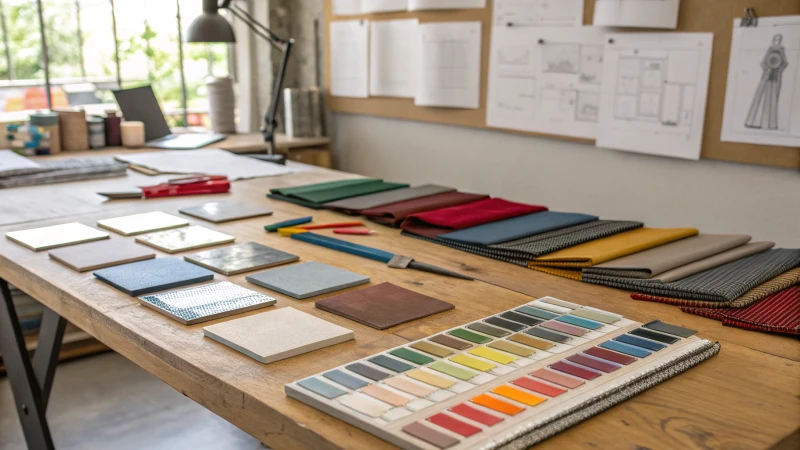
Factors to Consider
When I'm knee-deep in the decision-making process for short-run production, several critical factors bubble up to the surface. These include cost-effectiveness9, availability, durability, and environmental impact. Let's dive into these aspects together.
- Cost-Effectiveness: With short-run production, I often face the challenge of a tight budget. It's a bit like grocery shopping on a budget but wanting gourmet results. I look for materials that offer great value without skimping on quality. This approach helps me strike a balance between cost and performance.
- Material Availability: Imagine you're all set to bake a cake, but you can't find flour anywhere—frustrating, right? That's why I check if materials are readily available. Limited stock can throw a wrench in production timelines, so maintaining a steady supply is crucial to meet my short-run demands.
| Material Type | Cost | Durability | Availability |
|---|---|---|---|
| Cotton | Medium | High | Readily |
| Polyester | Low | Medium | Abundant |
| Silk | High | Very High | Limited |
Environmental Considerations
In today's world, I feel a responsibility to tread lightly on our planet. That's why I consider materials that have minimal environmental impact. Choosing eco-friendly options not only supports sustainable practices10 but also appeals to environmentally-conscious customers. I'm always on the lookout for recycled or biodegradable materials as potential choices.
Testing and Iteration
Short-run production is my playground for experimentation. I use initial batches to test how different materials perform in terms of fit, comfort, and functionality. Gathering customer feedback is like getting my personal critics' reviews—it leads to valuable insights and allows me to make design adjustments11 that enhance the final product.
Risk Mitigation
For me, short-run production is perfect for spotting potential issues early on. By carefully choosing the right materials, I minimize risks associated with product failure or customer dissatisfaction. I often analyze past production outcomes to fine-tune my material selection strategies for future projects. It's all about learning and growing from each experience.
Silk is the most cost-effective material for short-run production.False
Silk has a high cost, making it less cost-effective for short runs.
Polyester is abundantly available for short-run production needs.True
Polyester's abundant availability ensures it meets short-run demands.
Conclusion
Short-run production lines enable effective testing of new underwear designs by producing smaller batches, allowing for quick feedback on fit and comfort while minimizing risks before full-scale manufacturing.
Explore how flexibility in design testing can lead to innovative fashion products and improved consumer satisfaction. ↩
Learn why real-world feedback is crucial for designing products that meet actual user needs. ↩
Explore examples of iterative design processes to understand their application in real-world scenarios. ↩
Discover how consumer insights can drive product design improvements and lead to market success. ↩
Gain insights into future trends in feedback-driven design and how technology is reshaping this field. ↩
Understanding common design flaws helps refine products, improving quality and customer satisfaction. ↩
Learn about testing methods to ensure material quality and durability before full-scale production. ↩
Gathering customer feedback effectively ensures products meet market needs and enhances brand reputation. ↩
Discover materials that offer the best value for money in short-run production. ↩
Learn about sustainable material options to reduce environmental impact. ↩
Understand how to refine product designs using feedback from initial batches. ↩

